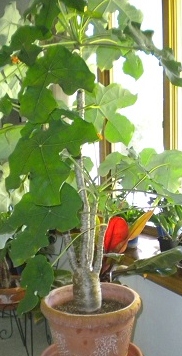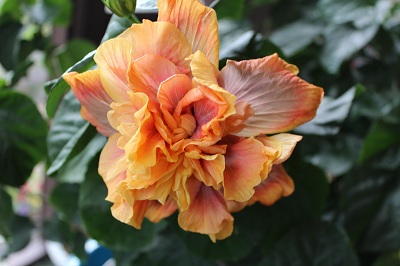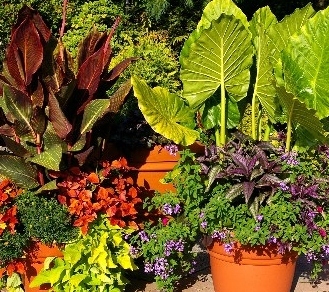
Caption
Tropical hibiscus are among many exotic tropical plants you can overwinter to use next season, even if you live in USDA Climate Zone 3.
Photo Credit
Doreen G. Howard
Subhead
Gardening tips on overwintering tender and tropical plants
My previous comment was concerning the winter months and I know as a tropical plant it can't be outside. It's where can I place it in my house to try and save it? We keep the house around 70-72° hence my concerns even in a Westward window it's going to lose all it's leaves again. Also I didn't transplant it from the store yet and will not do so until late next spring as you mentioned there is more more for root rot if I do so now.
My garage freezes and the basement is heated so my only alternative is to put my Brugmansia in a Western or Eastern facing window? I don't have windows on the other sides of the house. When I first purchased this beautiful plant the leaves all fell off. After putting it outside in the warmer temperatures it recovered somewhat but not to its lovely original state.
Does it have to go through a wintering period as a normal cycle like a bulb per se?
Thanks
Rhonda Murff
I enjoyed your comments re wintering tropical plants indoors when living in cold climates. My husband and I are moving to north Florida from Tampa in a few months. I favor tropical plants, especially ones that bloom, i.e. Bougainvillea, hibiscus, and day Lillie's. Is is possible to have day lillies when living north of Gainesville with winters frequently have consecutive days of below freezing temps?
Daylilies are cold-hardy all the way up to the Canadian border. I live on the Wisconsin-Illinois border where it reached -24F this winter and the daylilies are growing like crazy in the ground. I merely much them in late fall.
My mandeville vines are still blooming. Can I winter them. If so, how do I do it?
Mandevilla is easy to winter indoors. Cut vines back to save space and help the plant conserve moisture. Place in a bright window; water when soil in pot is dry an inch below the surface and enjoy! Don't fertilize until next spring.
Thank you so much. Does room temp matter? I have a heated but cool breezeway with South facing french doors. Geraniums over winter there. Will it be good placement for the Mandeville vines?
The breezeway sounds perfect if it stays above 60F.











Comments